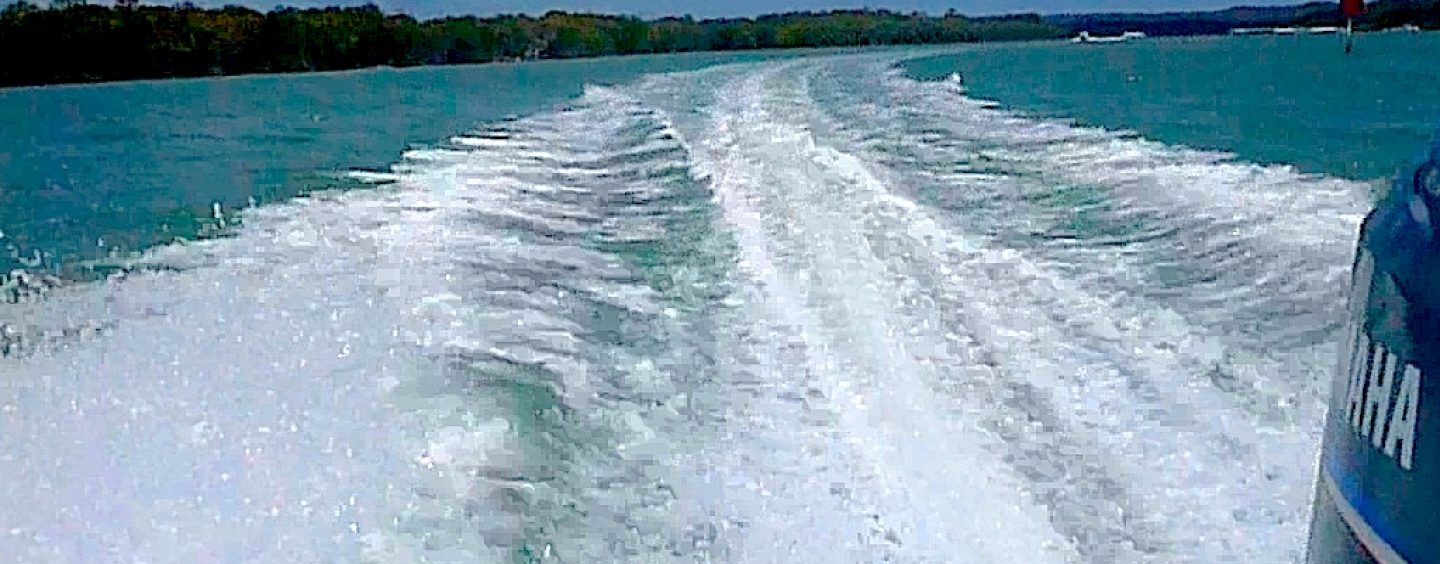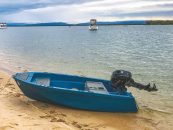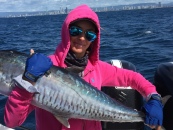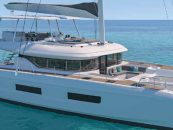Much can be read about wake and wash from boats, and how they work. However, we hardly read about how they affect our local shorelines. JAMES GULLISON of Griffith University’s Centre for Coastal Management, enlightens us on the impact of wake and wash on Gold Coast waterways.
DEFINITION OF ‘WAKE’ AND ‘WASH’
Wake – caused by the boat moving through the water and displacing it. Wake will have the greatest impact when all variables are considered such as vessel speed, hull shape and water depth.
Wash – is the disrupted water following from the stern of the boat and caused by the motion of the propeller. The broken or churned water left behind a boat as it moves though the water and includes the water aft of the propeller (prop wash).
No Wake – ‘’Slow – No Wake” means operation of a vessel at the slowest speed possible while still continuing to have steering control at all times. Moving watercraft will form two distinct types of wake from the hull. Wake pattern can vary with vessel length, speed and water depth. Modern hull designs are made with the purpose to increase fuel efficiency, reduce water resistance and minimise wake.
The following are the patterns generated by boats and which stages provide the most damage to shorelines and foreshores, and damage to marine life, with reference to Gold Coast waterways and the Broadwater:
The Displacement Wake Pattern – As speed increases, the displacement hull generates a larger wake and can be efficient up to a point (known as hull speed). Gold Coast waterways have many banks that are highly sensitive areas, and travelling at this speed allows for the least amount of damage. The area is full of various marine and terrestrial animals and this slow speed will provide the opportunity to be fortunate to spot dugongs, dolphins, sea turtles, white bellied sea eagles and our migratory shorebirds.
The Transitional Wake Pattern – An increase of speed (4 to 5 knots) will see the stern of the hull ‘dig in’ and fuel efficiency will decrease as larger waves are generated. The wave pattern will change due to not being able to keep up with the speed of the boat. This results in destructive wake generating from the vessel and will have the greatest influence along shoreline erosion. This is the speed most boat users should avoid travelling when possible due to the destructive wake it will generate.
The Planing Wake – Once there is an increase in speed, the hull will rise from the water onto the plane reducing the amount of the hull displaced in the water. In confined waterways, or narrow channels within the Broadwater, the waves will make their way to the banks. Even in deep water, these waves can still generate high energy, which is why speed restrictions will apply to vessels over 8m. It is an effective measure to minimise shoreline erosion due to minimal displacement from the hull.
EFFECT OF BIG WAVES ALONG THE SHORES OF SOUTH STRADBROKE
South Stradbroke as a sand island can be subject to severe erosion along the coastal margins during storm events. Similar can occur along the Broadwater side, but due the shallow water along the banks and the distance from the deeper channels, wake generated from most vessels can be dispersed before making it to shore. The exception, however, are wakes generated by larger vessels with greater displacement hulls, travelling at speed. Erosion will occur along the banks with minimal vegetation and some of this is evident when you travel further north into the southern end of Moreton Bay.
The Gold Coast waterways is home to a number of important seagrass beds in shallow waters. These beds can be highly sensitive to sediment displacement, which is a result from prop wash of vessels in shallow water. The resuspension of sediments can potentially inhibit seagrass health or drive algal blooms, due to the potential to increase pollutants and nutrients in the water column.
WASH AND WAKE ALONG THE SHORELINES OF THE COOMERA AND NERANG RIVERS
Protection of the Coomera and Nerang River shorelines begins with adequate vegetation along the banks. The vegetation in the riparian zones along the banks will buffer some of the wake generated from vessels and reduce the erosion severity along the shoreline.
A number of factors can affect the shoreline and increase the threat of erosion. These can include: size and frequency of waves; tidal range; long-shore currents; and, sediment supply. In the northern sections of the Broadwater, there is evidence along the shoreline on the impact vessel wake causes once the mangroves are removed. The role of mangroves is to reduce wave height and energy, which will limit the ability to erode sediment-causing damage to shorelines. Gold Coast Waterways Authority conduct an excellent job in minimising the impact that boats have on the marine environment. By identifying areas with reduced mangrove populations or shoreline erosion, speed limits are implemented where larger vessels are required to travel at lower speeds.
Is this becoming confusing? Well, it can be because different states will have differing interpretations on what the definitions are for boat wake and boat wash. Queensland waterways will have signage for ‘No Wash’ and ‘Reduce Wash’ that is referring to the ‘wake’ definition above (caused by the boat moving through the water and displacing it, not by the prop wash). As a boater, the best solution to reduce the impact along the shoreline is to know your boat well and what wake will be generated behind you at different speeds and at different depths.
One thing that is recommended for all skippers is to take the passenger seat, and observe what happens when someone else is driving. It comes in handy, because unlike driving a motor vehicle, there are so many different factors and variables, which can affect how a vessel moves through the water. How many people are able to eliminate the transition wake from their vessel when coming into slow-speed areas simply by dropping the gears back into neutral? It is the small details like this that allow drivers to be better skippers with sound awareness of their surroundings.
It is also important to remember that travelling at the speed shown on a speed restriction sign does not guarantee that the boat is not creating excessive wash. Even at slow speeds, boats will create a wash. By looking behind at the wash, skippers can be aware of the impact this can have on other boats, people in the water, or the shore.
What is the Froude number?
William Froude was an English engineer and naval architect, who in the 19th century was able to formulate laws for the resistance that water offers ships. During this period, hull design was to have a high emphasis on providing optimal stability, increased speed or fuel economy, and minimise wave resistance.
Froude’s number is used to compare wave-making resistance between bodies of various shapes and sizes to useful accuracy regardless of scale. Any vessel or object for that matter, which is moving through the water will display a distinctive v-pattern from the back. At certain speeds, two sets of waves can be distinguished in the wake: the transverse wave and diverging waves. As the Froude number increases, so does the amplitude of the diverging waves, but the transverse waves will begin to deplete rapidly. The hull of a speedboat is capable of reaching high Froude numbers. However, the drag of the boat is decreased when the planing speed has been achieved due to less water displaced from the hull.
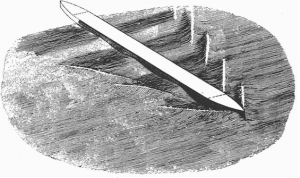
Froude’s sketch from 1877 of wave patterns produced by the hull of a ship as it moves through a body of water. Reproduced from “Principles of Naval Architecture, Volume 2” published by the Society of Naval Architects and Marine Engineers.
——————————-
In New South Wales:
If you see a ‘No Wash’ sign, it means you are operating in an area where vessel wash could easily annoy others or damage the foreshore or adjacent property. This means you should:
• Reduce speed as necessary to avoid creating wash that affects others.
• If in doubt, take your engine(s) out of gear and wait until your vessel is no longer making any wash before re-engaging your engines and carefully driving forward.
• Look behind occasionally to see if your boat is creating wash that affects other boats or the shore.
• If your wash is causing other vessels to rock at all, or is causing any sort of breaking or ‘slapping’ waves on the shore, you need to slow down further.
• The surest way to minimise your wash is to travel at just above idle speed – at this speed all vessel types will produce minimal wash
Don’t forget that even if there are no signs, it is still an offence to create waves that cause danger, inconvenience or damage. (In NSW: On the spot fine – $500; Maximum court penalty – $5,500) (Source: www.maritime.nsw.gov.au)






















